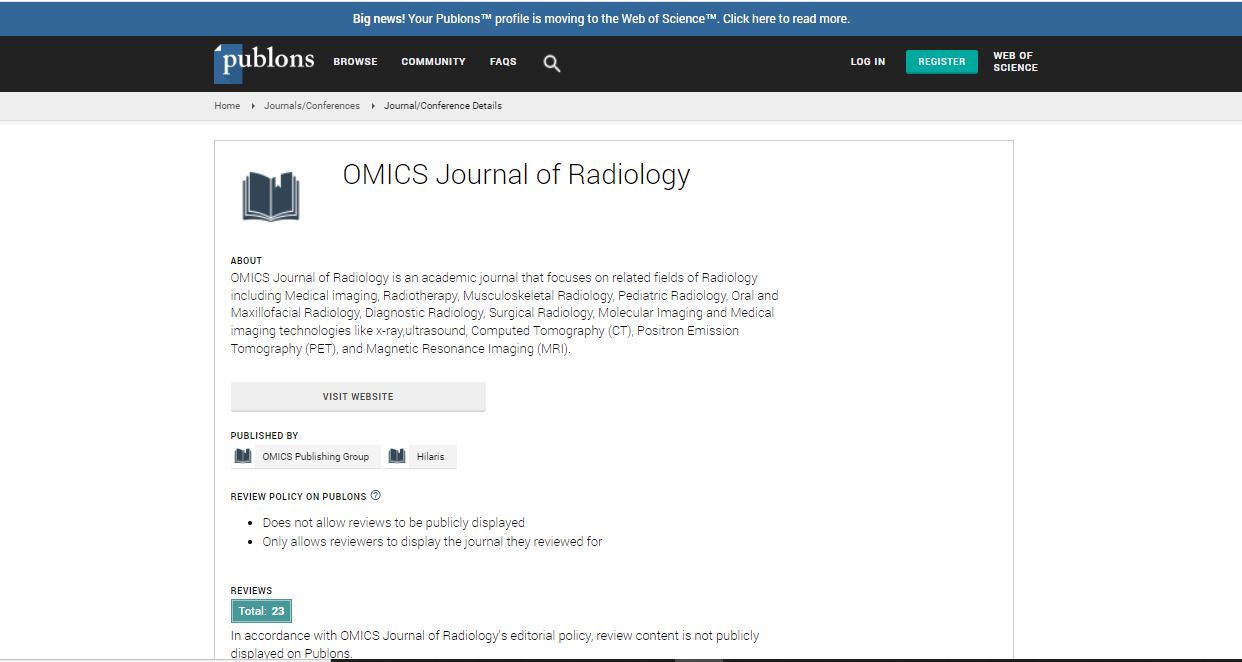Our Group organises 3000+ Global Conferenceseries Events every year across USA, Europe & Asia with support from 1000 more scientific Societies and Publishes 700+ Open Access Journals which contains over 50000 eminent personalities, reputed scientists as editorial board members.
Open Access Journals gaining more Readers and Citations
700 Journals and 15,000,000 Readers Each Journal is getting 25,000+ Readers
Google Scholar citation report
Citations : 551
Journal of Radiology received 551 citations as per Google Scholar report
Journal of Radiology peer review process verified at publons
Indexed In
- Index Copernicus
- Google Scholar
- Open J Gate
- Genamics JournalSeek
- ResearchBible
- Electronic Journals Library
- RefSeek
- Hamdard University
- EBSCO A-Z
- OCLC- WorldCat
- SWB online catalog
- Virtual Library of Biology (vifabio)
- Publons
- Geneva Foundation for Medical Education and Research
- ICMJE
Useful Links
Share This Page
In-vivo assessment of systolic and diastolic myocardial stiffness in a pig using 3D magnetic resonance elastography
International Conference on Medical Imaging & Diagnosis
Shivaram Poigai Arunachalam
Mayo Clinic, USA
Posters & Accepted Abstracts: OMICS J Radiol
Abstract
Myocardial stiffness is a novel biomarker with both diagnostic and prognostic potential in a range of cardiac diseases such as ischemia or myocardial infarction known to have increased stiffness. Application of Magnetic Resonance Elastography (MRE) to the heart enables measurement of myocardial stiffness in vivo. This study was performed to assess the feasibility of measuring in vivo myocardial stiffness during systole and diastole in a pig using 3D MRE. A custom passive driver was placed on the chest and imaging was performed in prone position on a 1.5 Tesla whole body MR imager (Signa Excite; GE) with a 4-channel coil in oblique plane using ECG-gated spin-echo echo planar imaging sequence at 140 Hz vibration frequency with 5 breath holds of approximately 25 seconds. Systolic and diastolic short-axis acquisition was performed prescribing corresponding time delays observed from a FIESTA cine scan. Acquisition parameters: 1 shot, NEX=1; TR/TE=4600/52ms; FOV=28.8 cm; 96x96 image matrix; 11 continuous 3 mm thick slices with 0 mm spacing, isotropic acquisition; 2 motionencoding gradient (MEG) pairs; x, y, and z motion-encoding directions; ASSET=2, and 4 phase offsets. MRE stiffness was obtained using 3D direct inversion algorithm and an ROI covering the left ventricle was used to report stiffness. The mean stiffness of the myocardium in systole was 6.3 kPa and 4.5 kPa in diastole. The results indicate that 3D MRE can differentiate systolic and diastolic myocardial stiffness. Follow up studies with a larger sample size are underway to further validate these findings.Biography
Shivaram Poigai Arunachalam is a Research Engineer in the Department of Radiology, in Mayo Clinic, Rochester, MN USA. He works on developing technical tools for cardiac magnetic resonance eleastorgraphy imaging for non-invasive assesment of myocardial stiffness in vivo which can be useful in the prognosis and diagnosis of vareity of cardiac diseases. He is also a final year PhD candidate in the Department of Biomedical Engineering at the University of Minnesota, Minneapolis, MN working on developing novel cardiac mapping systems for Atrial Fibrillation (AF).

 Spanish
Spanish  Chinese
Chinese  Russian
Russian  German
German  French
French  Japanese
Japanese  Portuguese
Portuguese  Hindi
Hindi 
